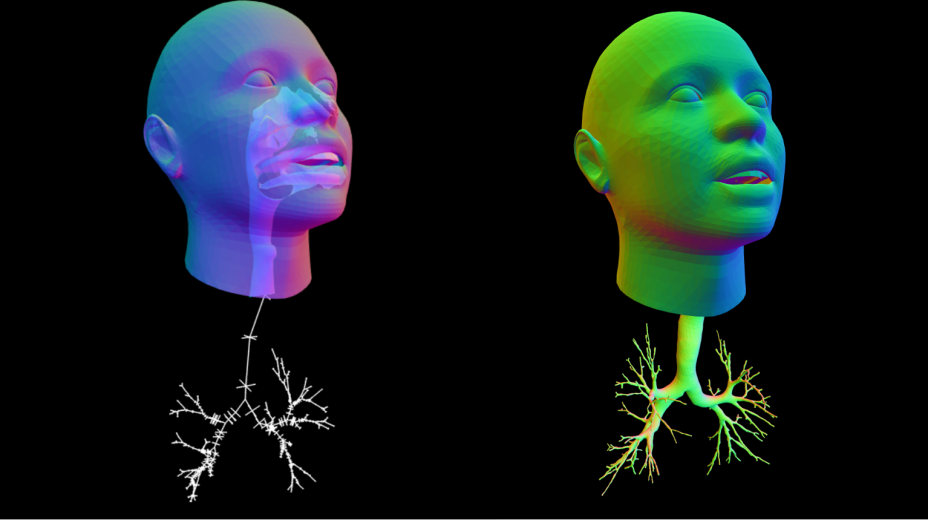Human Respiratory System Modeling
The U.S. EPA’s Office of Research and Development (ORD) has developed a 3-D computational fluid dynamics (CFD) model of the human respiratory system. The model is based on human scan data and can be adapted on the fly to account for age, ethnicity, and sex.
This novel, publicly available model is an important advancement in the field of aerosolized contaminant transport, deposition, and clearance in the human respiratory system.
 Model showing oral/nasal cavities (left) and branching airway paths to lobes (right)
Model showing oral/nasal cavities (left) and branching airway paths to lobes (right)
Model Uses
- Visualizing respiratory flow from the tip of the nose to the lower lung regions
- Investigating dosimetry and inhalation toxicology for general and sensitive populations such as the diseased and the elderly
- Determining exposure/dose determinations for aerosol-based drugs
- Planning for oral/nasal/lung surgery
- Determining exposure to hazardous contaminants (e.g., anthrax, ricin) where inhalation studies on humans cannot be conducted
- Reducing animal and human use in experimental testing, thus reducing testing times as well as costs
Model Interface
The model's user interface enables researchers and the broader health community simplified access to this model and the associated data.
The user inputs specifics such as sex, age, and the physical parameters they are investigating into the interface. A surface model is then generated that includes the nasal and oral cavities, pharynx, larynx, trachea, and three airway paths an average of 23 generations deep into each of the five lobes. This specific surface model is then exported to a standard stereolithography (STL) CAD file format.
Using the interface, the researcher can modify internal face morphology to match external facial features, thus allowing for model customization.
Model Specifics
- The human respiratory system model incorporates the extrathoracic region, as well as the tracheobronchial and peripheral airways of the lung.
- The model addresses sex, age, and human physiology from the nares through the 9th generation of the lung. Algorithms that learn from the upper lung generation data (generations 0-9) are then used to develop the 10th-23rd generations needed to complete the lung.
- Multiple sets of human data were used to ensure the model is representative of the general population; previously identified surface or physiological anomalies due to scan inaccuracies, movement, resolution, and/or human disease have been removed.
- The model allows for nasal or mouth breathing with a physiologically accurate mouth, tongue, gums and uvula.
- The complete model physiology allows for expansion and contraction during the breathing process.
Contact Us
If you would like access to the model or have a question, please contact Principal Investigator Jacky Ann Rosati Rowe, PhD.
